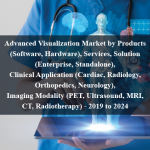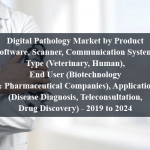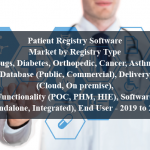OVERVIEW
The Infection Control Market is projected to grow significantly from USD 30.5 billion in 2024 to an estimated USD 46.2 billion by 2029, reflecting a CAGR of 8.7% during the forecast period. Infection control refers to the measures and practices taken to prevent the spread of infections, particularly in healthcare settings such as hospitals, clinics, and laboratories. This market includes a wide range of products and services such as disinfectants, sterilization equipment, protective apparel, and infection control training programs. The increasing prevalence of hospital-acquired infections (HAIs), advancements in infection control technologies, and the growing awareness about the importance of infection prevention are driving the market’s growth.
The market’s expansion is also supported by rising healthcare expenditure, increased adoption of advanced infection control practices, and stringent regulatory guidelines aimed at reducing infection rates. However, challenges such as high costs of advanced infection control products, stringent regulatory requirements, and the complexity of implementing comprehensive infection control programs need to be addressed to sustain market growth.
Geographically, North America and Europe dominate the infection control market due to their advanced healthcare infrastructure, significant investments in healthcare, and high adoption rates of innovative infection control technologies. The Asia Pacific region is also expected to witness substantial growth, driven by increasing healthcare expenditure, growing awareness of infection prevention, and the expanding healthcare sector.
Market Dynamics
Drivers:
The primary driver of the Infection Control Market is the increasing prevalence of hospital-acquired infections (HAIs). HAIs are infections that patients acquire during their stay in healthcare facilities, and they pose significant risks to patient safety and public health. The rising incidence of HAIs has led to a growing emphasis on infection prevention and control measures to protect patients and healthcare workers. Infection control products and services, such as disinfectants, sterilization equipment, and protective apparel, play a crucial role in reducing the spread of infections and ensuring a safe healthcare environment. Additionally, advancements in infection control technologies, such as the development of more effective disinfectants and innovative sterilization methods, are enhancing the efficiency and effectiveness of infection control practices, contributing to market growth.
Another significant driver is the growing awareness about the importance of infection prevention. Patients and healthcare providers are increasingly recognizing the critical role of infection control in improving patient outcomes and reducing healthcare costs. Infection prevention measures, such as proper hand hygiene, use of protective apparel, and regular disinfection of surfaces, are being widely adopted to minimize the risk of infections. The integration of advanced technologies, such as automated disinfection systems and real-time monitoring of infection control practices, is further enhancing the capabilities of infection prevention strategies. The rising awareness about infection prevention and the continuous advancements in infection control technologies are driving the growth of the infection control market.
Key Opportunities
The Infection Control Market presents numerous opportunities for growth and innovation, particularly in the development and integration of advanced infection control technologies. One prominent opportunity lies in the increasing use of automated disinfection systems. Automated disinfection systems, such as ultraviolet (UV) light robots and fogging devices, enhance the efficiency and effectiveness of disinfection processes by providing consistent and thorough coverage. The integration of automated disinfection systems with traditional infection control methods is expected to drive market growth by providing more reliable and efficient infection control solutions. Additionally, automated systems can help reduce the burden on healthcare workers, improve compliance with disinfection protocols, and minimize the risk of human error.
The growing focus on expanding the applications of infection control products and services presents another lucrative opportunity for the market. While infection control measures are commonly used in hospitals and clinics, there is increasing interest in exploring their potential for other settings, such as long-term care facilities, ambulatory surgical centers, and home healthcare. Research and development efforts are being conducted to evaluate the safety and efficacy of infection control products and services for these applications. The expanding applications of infection control measures are expected to drive market growth by providing new solutions for a broader range of healthcare settings and needs. Vendors that invest in research and development to explore new applications and improve existing infection control technologies are well-positioned to capitalize on this market trend.
Restraints:
One of the significant restraints in the pipette calibrators market is the high cost of advanced calibration systems. The development and deployment of sophisticated calibration technologies, such as automated and digital systems, require substantial investments in research, equipment, and training. The high upfront costs and ongoing maintenance expenses can be a barrier to adoption, particularly for small and medium-sized laboratories with limited budgets. Additionally, the cost of consumables and replacement parts used in calibration systems further increases the total cost of ownership. To overcome this restraint, vendors need to offer cost-effective solutions and flexible pricing models that cater to the diverse needs of laboratory settings.
Calibration systems and procedures must undergo rigorous validation and approval processes to ensure their accuracy, precision, and reliability. Compliance with regulatory standards, such as ISO 8655 and GLP (Good Laboratory Practice), is essential for market entry and commercialization. The complexity of calibration processes, which involves precise measurements and documentation, further complicates the regulatory landscape. Ensuring compliance with regulatory requirements and maintaining high-quality standards is critical for the successful deployment and operation of pipette calibrators. Vendors must navigate these regulatory challenges and invest in quality assurance and validation processes to meet the stringent requirements of the laboratory industry.
Regional Information:
- North America
North America remains a significant market for infection control solutions, characterized by advanced healthcare infrastructure, high adoption rates of innovative infection control technologies, and substantial investments in healthcare research and development. The region’s strong presence of leading medical device manufacturers and the high focus on enhancing patient care drive market growth. The increasing prevalence of hospital-acquired infections (HAIs), driven by the growing number of healthcare facilities and the rise in surgical procedures, is propelling the adoption of advanced infection control solutions in the region. Furthermore, stringent regulatory requirements and the need for effective infection prevention measures encourage healthcare providers to invest in high-quality infection control products and services. However, the high cost of advanced infection control technologies and regulatory complexities remain challenges that need to be addressed to fully capitalize on the market potential.
- Europe
Europe leads in the adoption of infection control solutions, driven by stringent regulatory requirements, significant investments in healthcare infrastructure, and a strong commitment to improving patient outcomes. The region’s focus on innovation and technological advancement fuels the demand for advanced infection control solutions. Countries like the UK, Germany, and France are at the forefront of implementing infection control technologies to enhance patient care capabilities and ensure compliance with regulatory standards. The European Union’s regulations, such as the Medical Device Regulation (MDR) and the Infection Control Guidelines, mandate stringent data protection and quality assurance measures, further driving market growth. However, economic uncertainties and the complexity of regulatory compliance necessitate strategic planning and risk management to navigate the market landscape effectively.
- Asia Pacific
The Asia Pacific region is expected to witness the highest growth rate in the infection control market due to rapid digital transformation, increasing healthcare expenditure, and the expanding healthcare sector. Countries like China, India, and Japan are investing heavily in advanced infection control solutions to support business growth and enhance patient care capabilities. The region’s expanding middle class and rising disposable incomes are also contributing to the increasing adoption of infection control solutions in various healthcare settings such as hospitals, clinics, and diagnostic laboratories. Governments in the region are implementing initiatives to promote digitalization and support the growth of the healthcare economy, further driving market growth. However, challenges related to regulatory compliance, fluctuating economic conditions, and the need for skilled healthcare professionals necessitate localized strategies and market insights for successful market penetration.
Recent Developments:
In October 2023, Getinge AB (Sweden) Healthmark Industries Co. Inc., an US-based leading provider of innovative instrument care and infection control consumables. This strategic move strengthens Getinge’s footprint in sterile reprocessing in the US.
In February 2023, Ecolab INC. (US) launuched the Ecolab Scientific Clean, a new consumer retail product-line, offering cleaning solutions for commercial, industrial, and residential use.
Key market Players:
Frequently Asked Questions
1) What is the projected market value of the Infection Control Market?
– The Infection Control Market is expected to reach an estimated value of USD 46.2 billion in revenue by 2029.
2) What is the estimated CAGR of the Infection Control Market over the 2024 to 2029 forecast period?
– The CAGR is estimated to be 8.2% for the Infection Control Market over the 2024 to 2029.
3) Who are the key players in the Infection Control Market?
– The primary drivers for the Infection Control Market include the increasing prevalence of hospital-acquired infections (HAIs), the growing awareness about the importance of infection prevention, and advancements in infection control technologies. These factors are contributing to the rising demand for infection control solutions. The integration of automated disinfection systems and real-time monitoring technologies is also driving market growth.
5) What are the restraints and challenges in the Infection Control Market?
– The high cost of advanced infection control products and services and stringent regulatory requirements are significant challenges in the market. These factors can limit the adoption of advanced infection control technologies. Additionally, the complexity of implementing comprehensive infection control programs and ensuring compliance with regulatory standards poses challenges that need to be addressed to ensure effective and secure infection prevention operations.
6) What are the key applications and offerings of the Infection Control Market?
– Infection control measures are essential for preventing the spread of infections in various healthcare settings, including hospitals, clinics, and laboratories. They support advanced infection prevention techniques, enabling effective disinfection, sterilization, and protection of healthcare workers and patients. These solutions improve patient outcomes by reducing the risk of infections and facilitating early intervention. Additionally, infection control measures are crucial in long-term care facilities, ambulatory surgical centers, and home healthcare, enhancing the efficiency and effectiveness of infection prevention practices.
7) Which region is expected to drive the market for the forecast period?
– Asia pacific is expected to have the highest market growth from 2024 to 2029
Why Choose Us?
Insights into Market Trends: Global Market Studies reports provide valuable insights into market trends, including market size, segmentation, growth drivers, and market dynamics. This information helps clients make strategic decisions, such as product development, market positioning, and marketing strategies.
Competitor Analysis: Our reports provide detailed information about competitors, including their market share, product offerings, pricing, and competitive strategies. This data can be used to inform competitive strategies and to identify opportunities for growth and expansion.
Industry Forecasts: Our reports provide industry forecasts, which will inform your business strategies, such as investment decisions, production planning, and workforce planning. These forecasts can help you to prepare for future trends and to take advantage of growth opportunities.
Access to Industry Experts: Our solutions include contributions from industry experts, including analysts, consultants, and subject matter experts. This access to expert insights can be valuable for you to understand the market.
Time and Cost Savings: Our team at Global Market Studies can save you time and reduce the cost of conducting market research by providing comprehensive and up-to-date information in a single report, avoiding the need for additional market research efforts.












